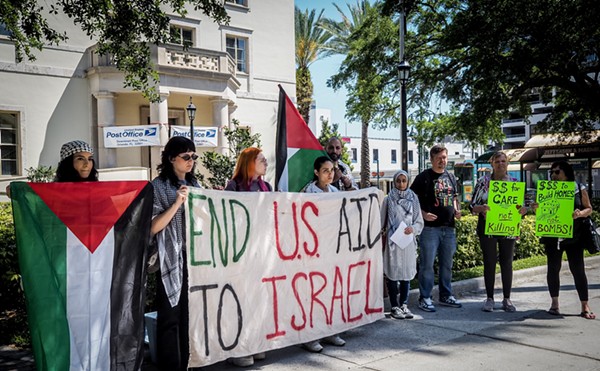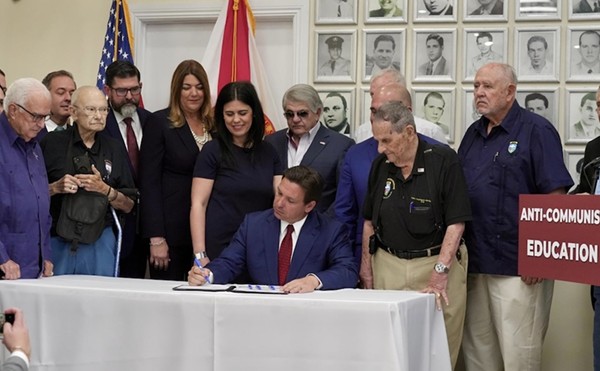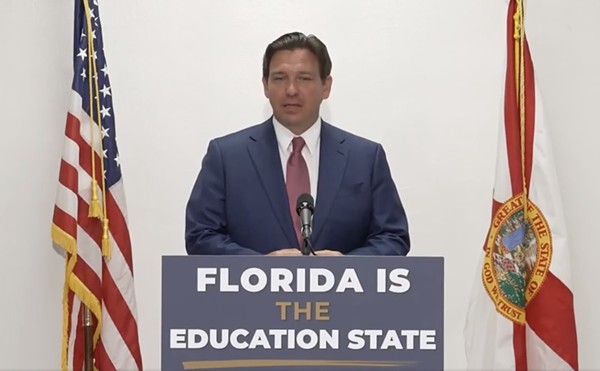City Hall is promising big improvements -- and holding out the tantalizing possibility of big money -- for the Parramore Heritage area just west of downtown. It has reconstituted a 14-member board of volunteers, corralled the nationally respected Enterprise Foundation and promised $3 million in startup funding to revitalize the depressed, mostly African-American neighborhood. The city even has a catchy name for the plan: Parramore 2000.
But while expectations are high for the new initiative, neighborhood participation, so far, is low. And that has some who live and work in Parramore concerned.
"As we look at housing we'll want to have citizens sitting down at the table, and we'll ask them, if they could envision a community, how would they envision it," says Walter Hawkins, an aide to Mayor Glenda Hood serving as an "executive on loan" to the board. "They're going to have a very important role in it."
The new Parramore Heritage Renovation Foundation board is freighted with experts in planning, redevelopment and fund-raising, says Jim DeSimone, Mayor Hood's spokesman: "There are neighborhood people in there, but clearly, there are a large number of experts, too." And that's the idea. DeSimone says former Parramore boards were too small and lacked the diverse skills needed to get the money and key redevelopment players to work together. The city has spent about $40 million in the neighborhood during the past decade with little benefit to residents. "There isn't endless political support for revitalizing Parramore," DeSimone says.
Hood has asked the new board to develop a plan by Jan. 15. The group met two weeks ago and came up with four main concerns, says Hawkins: public safety, economic development, a neighborhood elementary school and better housing. The plan will have to act on all fronts simultaneously, he says, with the aim of encouraging home ownership. "Transients -- people who are in and out -- that doesn't serve any community well," he says.
Habitat for Humanity has been working toward such stability for years, building new houses in Parramore and selling them for less than cost to people who promised to stay. Yet Chris Jepson, executive director of Habitat in Orlando, says, "We have not been contacted to help with the planning, and we build almost exclusively in the area they're describing."
Hawkins says he did speak to "one of the gentlemen" at Habitat, but that communication is a two-way street: "No one can sit on the sideline. It's a matter of picking up the telephone."
Kevin Serajj, whose Advocate newspaper has served the community for six years, says he trusts Hawkins to keep his promises. But he intends to lobby for wider participation. "Six or seven years ago they found a ton of community people to participate in a slew of different committees, from zoning to seniors to economic development. So the community has no dearth of people who want to get involved and who have some serious opinions about what should be done."
Betty Gelzer, who runs the Peabo Child Care Center on Hills Street and lives just blocks away, is one of only two board members who resides in the district. She hopes to bring more of her neighbors into the process. "I'm trying every effort," says Gelzer, who has owned the business for 20 years and whose daughter, Lawana, ran unsuccessfully for City Council last year. "I'm not going to put it on other people."
Previous neighborhood groups suffered from lack of information, Gelzer says. And the former incarnations of the Parramore Heritage Renovation Foundation seemed aloof and unresponsive to neighborhood concerns. "They come in and make decisions for us and we don't know what's going on," she says.
Gelzer says job No. 1 should be to "clean up" the neighborhood -- and by that she means move the homeless and homeless services organizations out.
That debate promises to be contentious: if not in the low-income Parramore, where? A neighborhood school likely will be controversial as well. Parramore's children are bused out now in order to racially integrate surrounding schools. If the busing stops, segregation could worsen.
Much of the tension seems based in the model of redevelopment the city has chosen.
Hawkins says Orlando hopes to follow Atlanta, which spruced up five neighborhoods surrounding downtown in advance of the 1996 Summer Olympics. The $90 million spent there has led to more long-range redevelopment plans. But the process is driven by corporate executives instead of residents.
A better model might be the Dudley Street Neighborhood Initiative in Boston, heralded by community activists nationwide as the best model for revitalization that doesn't displace the poor. In Boston, the residents were elected to control of their board at the second meeting. Foundation and government money was used to solve the problems the residents themselves prioritized; when they found they could change and improve their neighborhood, home-ownership flourished, crime dropped, stability increased.
There were losers, though: The initiative stopped real-estate speculators who had been replacing tenement-style apartments with expensive condos. Dudley today is multi-ethnic and working-class, rather than the yuppie haven some had envisioned.
Indeed, there are signs that urban gentrification may be the engine of the Parramore effort:
• Getting the "corporate community" involved is high on the Parramore 2000 priority list. NationsBank, which led a revitalization effort in Charlotte, N.C., has expressed interest in the Parramore push.
• Speculative commercial real-estate interests, led by Carolina-Florida Properties, already have cleared a substantial tract of Parramore.
• The focus on negative aspects of social service agencies and their clients feeds that misconception that area residents are all disreputable, and that wholesale removal is the only answer.
"A lot of people in the neighborhood," says Gelzer, "they're not the drug dealers, they're not the prostitutes."
If gentrification is the goal, of course, the Dudley Street model can't work; the residents will not voluntarily plan to eliminate themselves. But if City Hall hopes for true neighborhood rejuvenation, a centralized, top-down plan is unlikely to work, either.
Hawkins says the plan will take three to five years to implement, and he talks about creating opportunities for neighborhood input and for small victories toward the ultimate goal. Parramore residents will be watching closely.



















